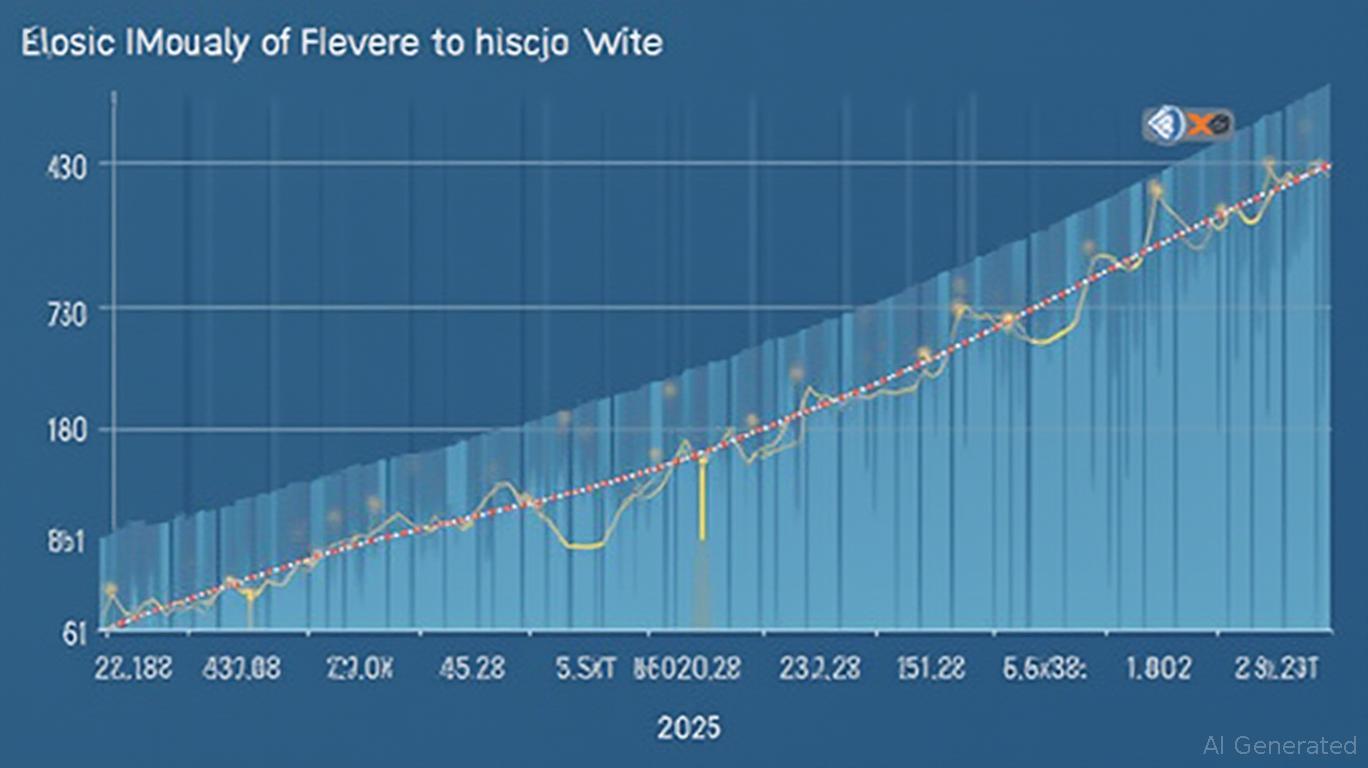Elastic: Undervalued Growth Potential Amid Macroeconomic Uncertainty
The global economy teeters on the
of stagflation—a cocktail of stagnant growth and stubborn inflation—that has tested the resilience of even the most robust businesses. Amid this uncertainty, Elastic NV (ESTC) emerges as a compelling investment opportunity, its valuation multiples suggesting a discount to peers despite demonstrating consistent revenue growth and cross-sector adaptability. This analysis explores why Elastic's "elastic" business model—flexible licensing, diverse client base, and subscription-driven SaaS (Software-as-a-Service) economics—positions it to thrive in turbulent times, offering investors a rare entry point before macro stabilization.Valuation: A Discounted Growth Story
Elastic's price-to-sales (P/S) ratio of 5.95x (as of June 2025) stands as a stark contrast to its peers and historical averages.
- Salesforce (CRM): 6.59x
- SAP (SAP): 8.82x
- Adobe (ADBE): 7.93x
- Industry Average: 5.2x
While Elastic's P/S is slightly above the sector average, it is 23% below its five-year average of 8.99x, reflecting a recent valuation contraction. This divergence suggests the market has overlooked Elastic's fundamentals, including its recurring revenue streams (80% of total revenue from subscriptions) and its ability to grow despite macroeconomic headwinds.

The SaaS Model: Resilience in Volatile Markets
Elastic's SaaS model anchors its predictable revenue and high retention rates, critical during economic slowdowns. With $1.43 billion in trailing-twelve-month (TTM) revenue, the company has delivered 29% year-over-year (YoY) growth in ARR (Annual Recurring Revenue), outpacing peers like Palantir (PLTR) and MicroStrategy (MSTR), whose valuations are inflated by speculative growth bets.
The elastic energy savings analogy—a metaphor for Elastic's business model—aptly describes its operational efficiency. Just as elastic materials minimize energy dissipation under stress, Elastic's flexible licensing (including open-source and enterprise tiers) and cross-industry adoption (from finance to healthcare) reduce reliance on any single sector. This diversification shields it from industry-specific downturns, a rarity in tech.
Stagflation Resilience: Outperforming in a Slump
Stagflation poses risks, but Elastic's low margin sensitivity and subscription-heavy model mitigate downside exposure:
1. Cost Discipline: Elastic's gross margins remain stable at 82%, thanks to cloud infrastructure efficiencies and minimal physical goods exposure.
2. Cross-Sector Demand: Clients in regulated industries (e.g., healthcare, finance) face compliance-driven tech investments, creating recurring demand for Elastic's search, logging, and analytics tools.
3. Geographic Diversification: 54% of revenue comes from outside North America, reducing reliance on U.S. economic cycles.
In contrast, competitors like SAP and Intuit face sector-specific headwinds (e.g., software spending cuts in discretionary industries). Elastic's model, by design, avoids this concentration.
Risks to Consider
- Competitive Pressures: Larger peers like Salesforce and Adobe could intensify SaaS pricing wars, compressing margins.
- Macroeconomic Deterioration: A prolonged recession might delay enterprise software upgrades, though Elastic's subscription model buffers near-term cash flows.
- Open-Source Risks: Free adoption of Elastic's tools could limit premium upselling, though its enterprise-tier pricing (20–30% of revenue) remains sticky.
Investment Thesis: A Rare Entry Point
Elastic's current valuation—a P/S of 5.95x, 19% below its 12-month average—presents a compelling risk-reward tradeoff. With $8.5 billion in market cap and a robust balance sheet ($2.3 billion in cash), the company is well-positioned to capitalize on secular trends in cloud adoption and data analytics.
Investors should accumulate positions at current levels, with a target P/S of 7.5x–8.0x (closer to historical averages) as macro fears subside. A stop-loss at P/S 4.5x would protect against further downside.
Conclusion
Elastic's valuation discount masks a company primed to navigate stagflation with minimal dissipation of growth momentum. Its SaaS model, cross-sector appeal, and disciplined cost structure form a durable moat. For investors seeking resilience in a volatile market, Elastic offers a rare combination of value and secular growth—a compelling case for strategic long-term exposure.

Comments
No comments yet